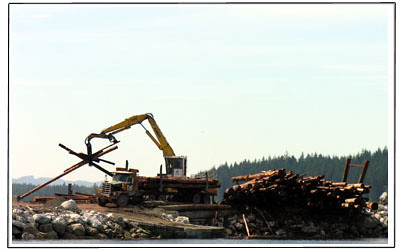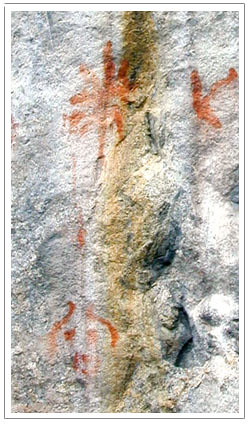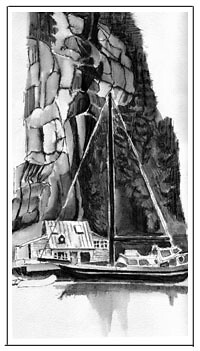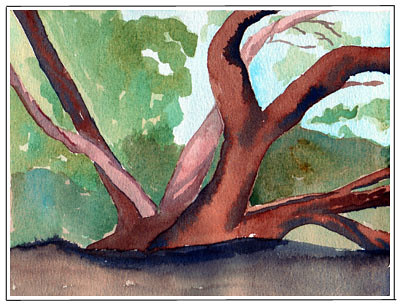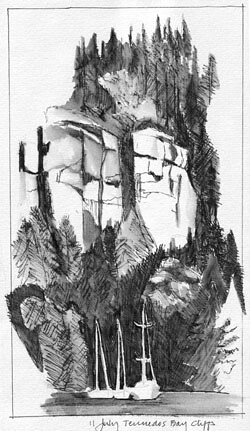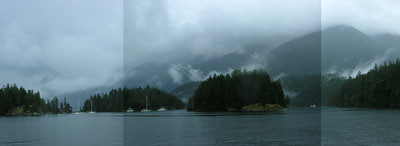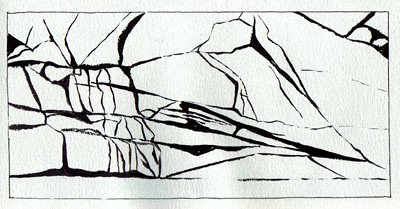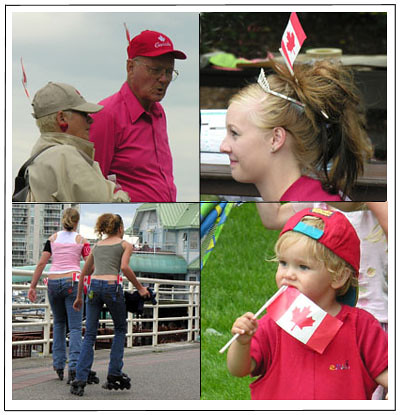Logging Blog
Port McNeil is a small city toward the north end of Vancouver Island, and our stop for groceries, water, fuel, and ice cream. It also remains an active logging port. Just across from the city dock there is a vast shoreside staging area where a vast number of log arrive in booms pulled by tugs. They are picked out of the water by a big crane, loaded onto trucks, and driven to a yard where they are scaled and sorted. Then they are loaded back onto the trucks, which return to the port at great speed, raising clouds of dust. The crane picks up an entire truckload of logs and returns them to the water, where they are again made up into booms and taken by other tugs to the mills. It is noisy, dirty, and it makes the giant logs look like tiny pencils.
We’re headed the other way, north around Cape Caution where there are fewer boats, fewer log booms, and more whales, otters and sea lions. A marina is really just a trailer park, albeit a floating one. We give in to the irresistible urge to watch our neighbors and notice their boats and their docking maneuvers. We guess we are better off watching wildlife and clouds.
